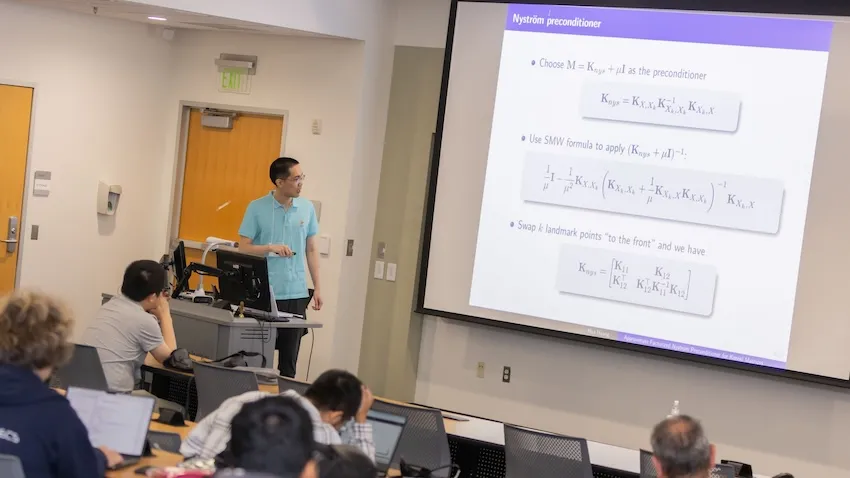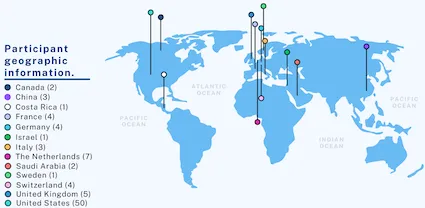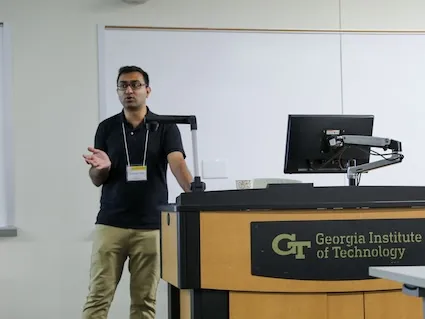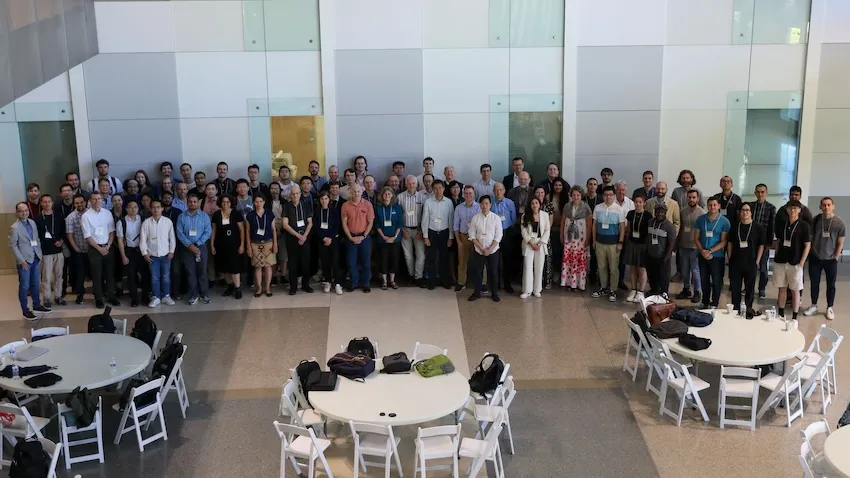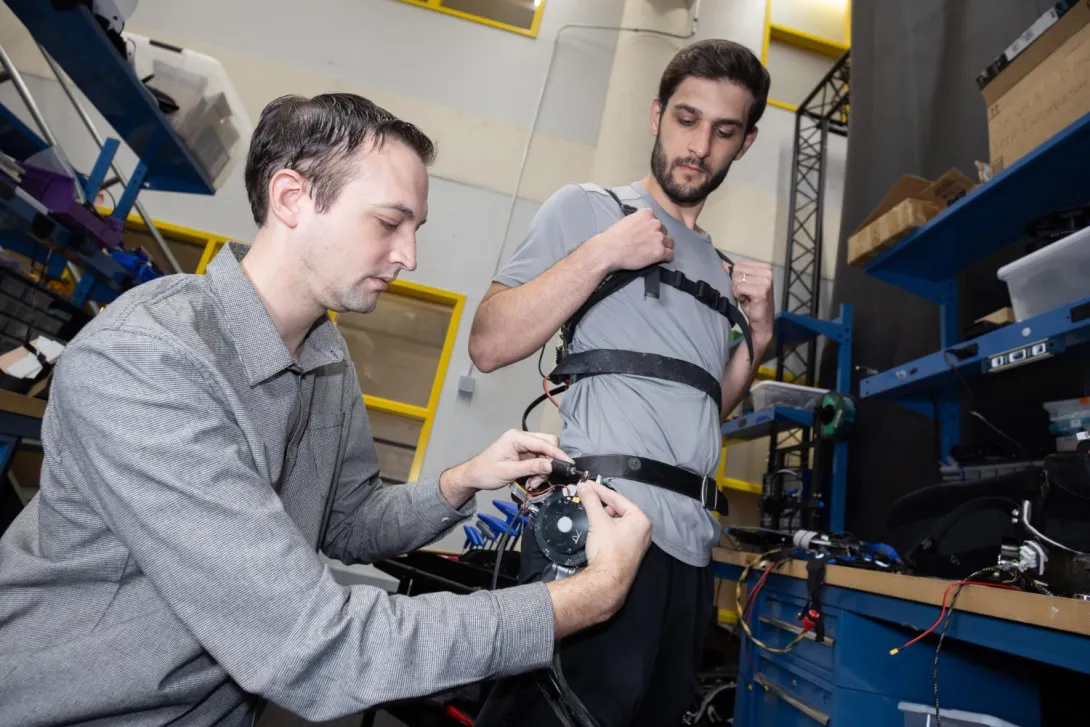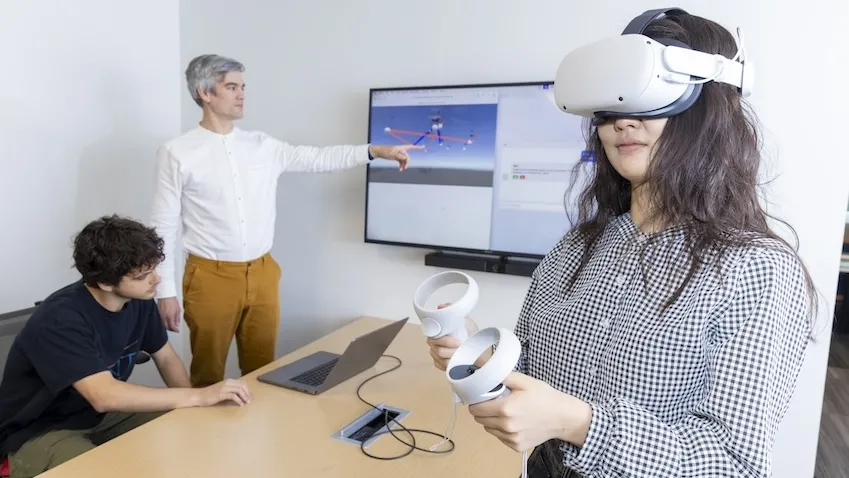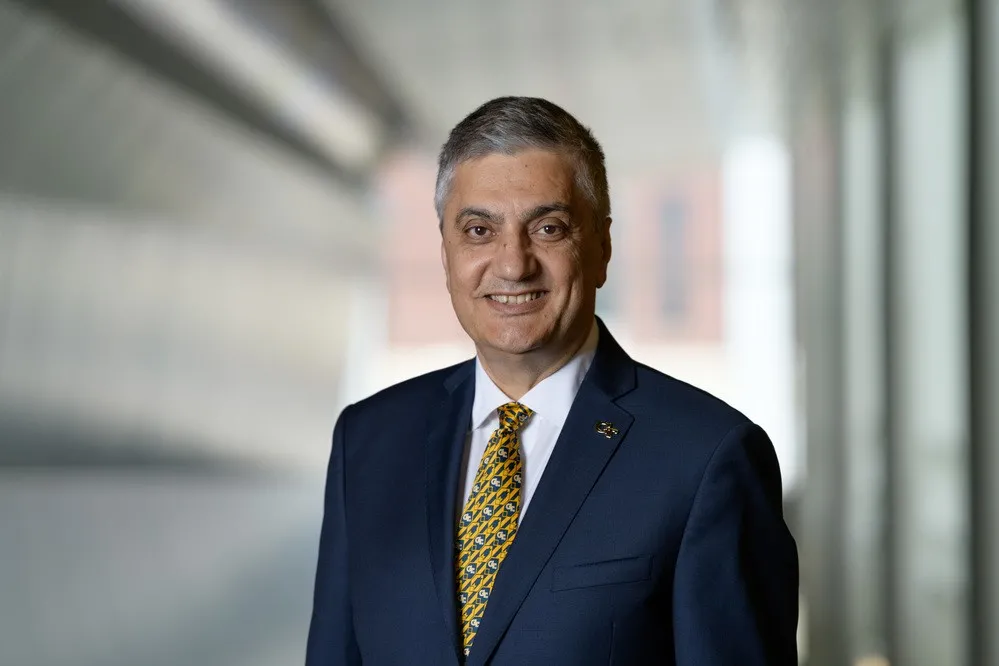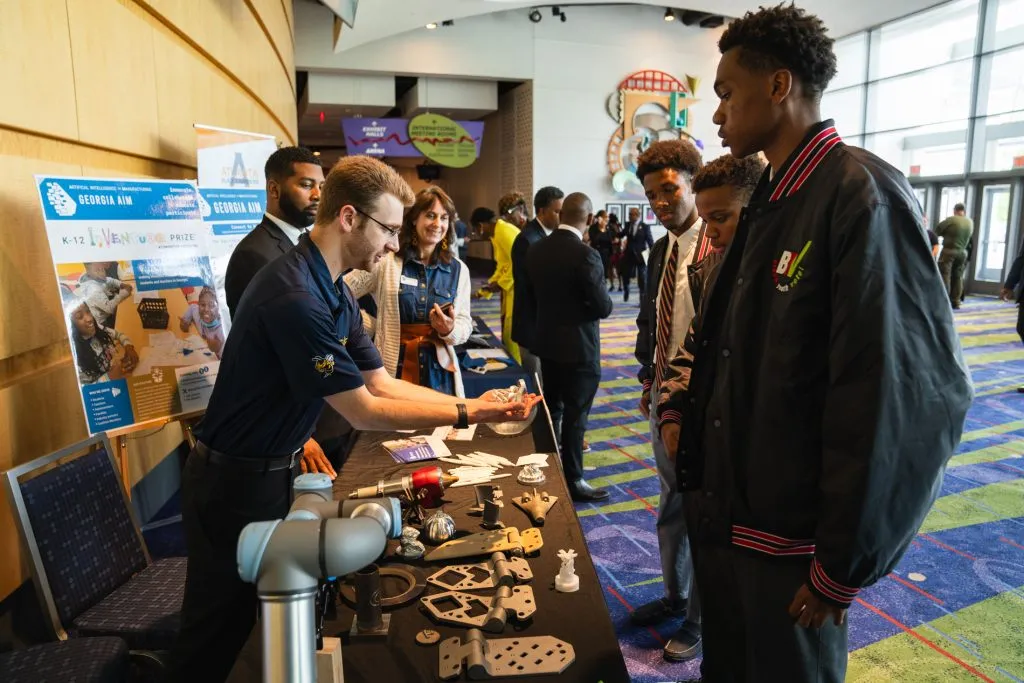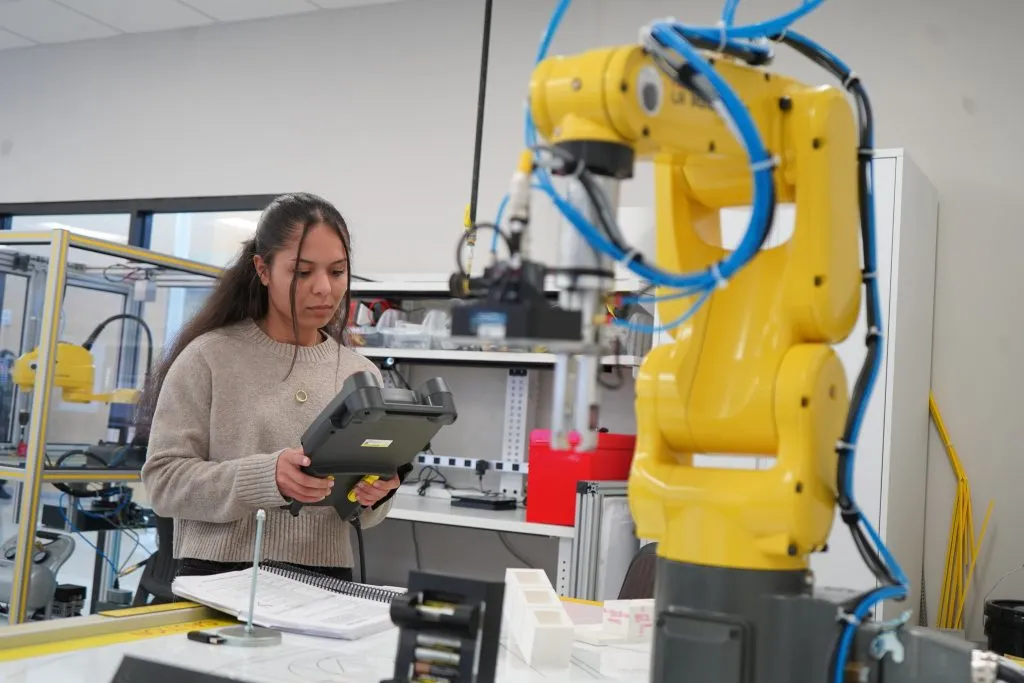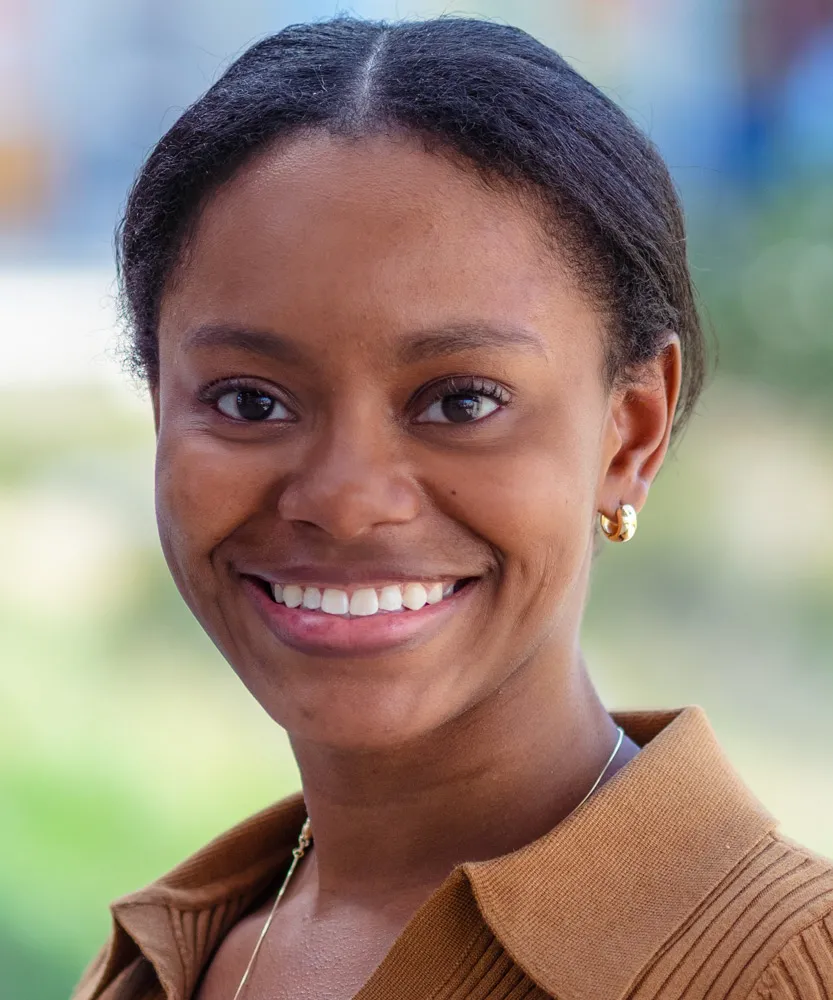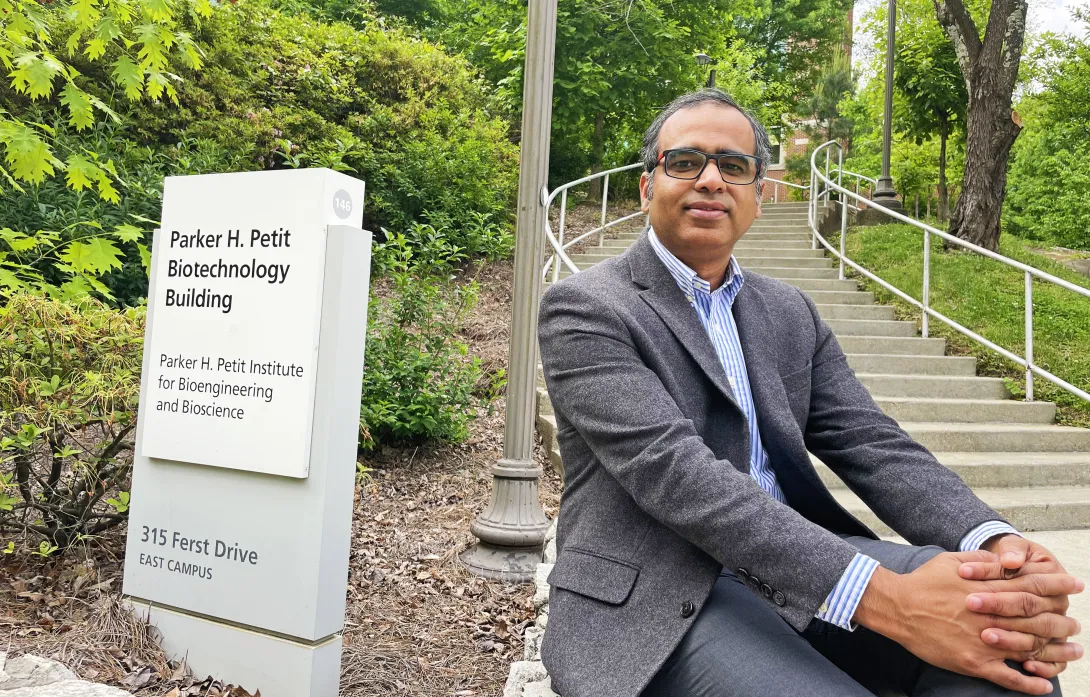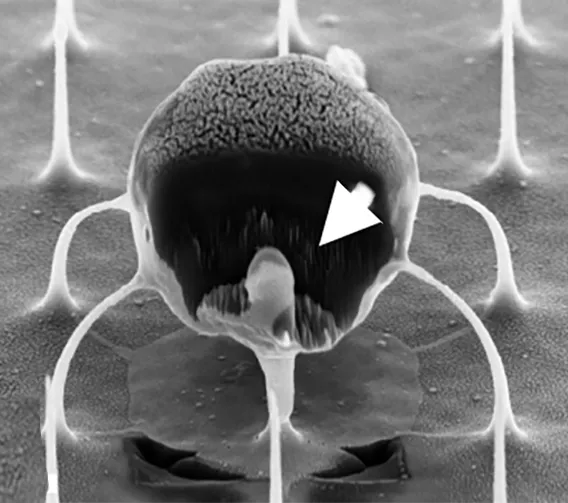Jun. 28, 2024
From weather prediction to drug discovery, math powers the models used in computer simulations. To help these vital tools with their calculations, global experts recently met at Georgia Tech to share ways to make math easier for computers.
Tech hosted the 2024 International Conference on Preconditioning Techniques for Scientific and Industrial Applications (Precond 24), June 10-12.
Preconditioning accelerates matrix computations, a kind of math used in most large-scale models. These computer models become faster, more efficient, and more accessible with help from preconditioned equations.
“Preconditioning transforms complex numerical problems into more easily solved ones,” said Edmond Chow, a professor at Georgia Tech and co-chair of Precond 24’s local organization and program committees.
“The new problem wields a better condition number, giving rise to the name preconditioning.”
Researchers from 13 countries presented their work through 20 mini-symposia and seven invited talks at Precond 24. Their work showcased the practicality of preconditioners.
Vandana Dwarka, an assistant professor at Delft University of Technology, shared newly developed preconditioners for electromagnetic simulations. This technology can be used in further applications ranging from imaging to designing nuclear fusion devices.
Xiaozhe Hu presented a physics-based preconditioner that simulates biophysical processes in the brain, such as blood flow and metabolic waste clearance. Hu brought this research from Tufts University, where he is an associate professor.
Tucker Hartland, a postdoctoral researcher at Lawrence Livermore National Laboratory, discussed preconditioning in contact mechanics. This work improves the modeling of interactions between physical objects that touch each other. Many fields stand to benefit from Hartland’s study, including mechanical engineering, civil engineering, and materials science.
A unique aspect of this year’s conference was an emphasis on machine learning (ML). Between a panel discussion, tutorial, and several talks, experts detailed how to employ ML for preconditioning and how preconditioning can train ML models.
Precond 24 invited seven speakers from institutions around the world to share their research with conference attendees. The presenters were:
- Monica Dessole, CERN, Switzerland
- Selime Gurol, CERFACS, France
- Alexander Heinlein, Delft University of Technology, Netherlands
- Rui Peng Li, Lawrence Livermore National Laboratory, USA
- Will Pazner, Portland State University, USA
- Tyrone Rees, Science and Technology Facilities Council, UK
- Jacob B. Schroder, University of New Mexico, USA
Along with hosting Precond 24, several Georgia Tech researchers participated in the conference through presentations.
Ph.D. students Hua Huang and Shikhar Shah each presented a paper on the conference’s first day. Alumnus Srinivas Eswar (Ph.D. CS 2022) returned to Atlanta to share research from his current role at Argonne National Laboratory. Chow chaired the ML panel and a symposium on preconditioners for matrices.
“It was an engaging and rewarding experience meeting so many people from this very tight-knit community,” said Shah, who studies computational science and engineering (CSE). “Getting to see talks close to my research provided me with a lot of inspiration and direction for future work.”
Precond 2024 was the thirteenth meeting of the conference, which occurs every two years.
The conference returned to Atlanta this year for the first time since 2005. Atlanta joins Minneapolis as one of only two cities in the world to host Precond more than once. Precond 24 marked the sixth time the conference met in the U.S.
Georgia Tech and Emory University’s Department of Mathematics organized and sponsored Precond 24. The U.S. Department of Energy Office of Science co-sponsored the conference with Tech and Emory.
Georgia Tech entities swarmed together in support of Precond 24. The Office of the Associate Vice President for Research Operations and Infrastructure, College of Computing, and School of CSE co-sponsored the conference.
“The enthusiasm at the conference has been very gratifying. So many people organized sessions at the conference and contributed to the very strong attendance,” Chow said.
“This is a testament to the continued importance of preconditioning and related numerical methods in a rapidly changing technological world.”
News Contact
Bryant Wine, Communications Officer
bryant.wine@cc.gatech.edu
Jun. 27, 2024
Artificial intelligence and machine learning techniques are infused across the College of Engineering’s education and research.
From safer roads to new fuel cell technology, semiconductor designs to restoring bodily functions, Georgia Tech engineers are capitalizing on the power of AI to quickly make predictions or see danger ahead.
Explore some of the ways we are using AI to create a better future on the College's website.
This story was featured in the spring 2024 issue of Helluva Engineer magazine, produced biannually by the College of Engineering.
News Contact
Joshua Stewart
College of Engineering
Jun. 27, 2024
It’s tempting to think that the artificial intelligence revolution is coming — for good or ill — and that AI will soon be baked into every facet of our lives. With generative AI tools suddenly available to anyone and seemingly every company scrambling to leverage AI for their business, it can feel like the AI-dominated future is just over the horizon.
The truth is, that future is already here. Most of us just didn’t notice.
Every time you unlock your smartphone or computer with a face scan or fingerprint. Every time your car alerts you that you’re straying from your lane or automatically adjusts your cruise control speed. Every time you ask Siri for directions or Alexa to turn on some music. Every time you start typing in the Google search box and suggestions or the outright answer to your question appear. Every time Netflix recommends what you should watch next.
All driven by AI. And all a regular part of most people’s days.
But what is “artificial intelligence”? What about “machine learning” and “algorithms”? How are they different and how do they work?
We asked two of the many Georgia Tech engineers working in these areas to help us understand the basic concepts so we’re all better prepared for the AI future — er, present.
Read the full crash course on the College of Engineering website.
This story was featured in the spring 2024 issue of Helluva Engineer magazine, produced biannually by the College of Engineering.
News Contact
Joshua Stewart
College of Engineering
Jun. 27, 2024
A team’s success in any competitive environment often hinges on how well each member can anticipate the actions of their teammates.
Assistant Professor Christopher MacLellan thinks teachable artificial intelligence (AI) agents are uniquely suited for this role and make ideal teammates for video gamers.
With the help of funding from the U.S. Department of Defense, MacLellan hopes to prove his theory with a conversational, task-performing agent he co-engineered called the Verbal Apprentice Learner (VAL).
“You need the ability to adapt to what your teammates are doing to be an effective teammate,” MacLellan said. “We’re exploring this capability for AI agents in the context of video games.”
Unlike generative AI chatbots like ChatGPT, VAL uses an interactive task-learning approach.
“VAL learns how you do things in the way you want them done,” MacLellan said. “When you tell it to do something, it will do it the way you taught it instead of some generic random way from the internet.”
A key difference between VAL and a chatbot is that VAL can perceive and act within the gaming world. A chatbot, like ChatGPT, only perceives and acts within the chat dialog.
MacLellan immersed VAL into an open-sourced, simplified version of the popular Nintendo cooperative video game Overcooked to discover how well the agent can function as a teammate. In Overcooked, up to four players work together to prepare dishes in a kitchen while earning points for every completed order.
How Fast Can Val Learn?
In a study with 12 participants, MacLellan found that users could often correctly teach VAL new tasks with only a few examples.
First, the user must teach VAL how to play the game. Knowing that a single human error could compromise results, MacLellan designed three precautionary features:
- When VAL receives a command such as "cook an onion," it asks clarifying questions to understand and confirm its task. As VAL continues to learn, clarification prompts decrease.
- An “undo” button to ensure users can reverse an errant command.
- VAL contains GPT subcomponents to interpret user input, allowing it to adapt to ambiguous commands and typos. The GPT subcomponents drive changes in VAL’s task knowledge, which it uses to perform tasks without additional guidance.
The participants in MacLellan’s study used these features to ensure VAL learned the tasks correctly.
The high volume of prompts creates a more tedious experience. Still, MacLellan said it provides detailed data on system performance and user experience. That insight should make designing a more seamless experience in future versions of VAL possible.
The prompts also require the AI to be explainable.
“When VAL learns something, it uses the language model to label each node in the task knowledge graph that the system constructs,” MacLellan said. “You can see what it learned and how it breaks tasks down into actions.”
Beyond Gaming
MacLellan’s Teachable AI Lab is devoted to developing AI that inexperienced users can train.
“We are trying to come up with a more usable system where anyone, including people with limited expertise, could come in and interact with the agent and be able to teach it within just five minutes of interacting with it for the first time,” he said.
His work caught the attention of the Department of Defense, which awarded MacLellan multiple grants to fund several of his projects, including VAL. The possibilities of how the DoD could use VAL, on and off the battlefield, are innumerable.
“(The DoD) envisions a future in which people and AI agents jointly work together to solve problems,” MacLellan said. “You need the ability to adapt to what your teammates are doing to be an effective teammate.
“We look at the dynamics of different teaming circumstances and consider what are the right ways to team AI agents with people. The key hypothesis for our project is agents that can learn on the fly and adapt to their users will make better teammates than those that are pre-trained like GPT.”
Design Your Own Agent
MacLellan is co-organizing a gaming agent design competition sponsored by the Institute of Electrical and Electronic Engineers (IEEE) 2024 Conference on Games in Milan, Italy.
The Dice Adventure Competition invites participants to design their own AI agent to play a multi-player, turn-based dungeon crawling game or to play the game as a human teammate. The competition this month and in July offers $1,000 in prizes for players and agent developers in the top three teams.
News Contact
Nathan Deen
Communications Officer
School of Interactive Computing
Jun. 25, 2024
Chaouki Abdallah, Georgia Tech’s executive vice president for Research (EVPR), has been named the new president of the Lebanese American University in Beirut.
Abdallah, MSECE 1982, Ph.D. ECE 1988, has served as EVPR since 2018; in this role, he led extraordinary growth in Georgia Tech’s research enterprise. Through the work of the Georgia Tech Research Institute, 10 interdisciplinary research institutes (IRIs) and a broad portfolio of faculty research, Georgia Tech now stands at No. 17 in the nation in research expenditures — and No. 1 among institutions without a medical school.
Additionally, Abdallah has also overseen Tech’s economic development activities through the Enterprise Innovation Institute and such groundbreaking entrepreneurship programs as CREATE-X, VentureLab, and the Advanced Technology Development Center.
Under Abdallah's strategic, thoughtful leadership, Georgia Tech strengthened its research partnerships with historically Black colleges and universities, launched the New York Climate Exchange with a focus on accelerating climate change solutions, established an AI Hub to boost research and commercialization in artificial intelligence, advanced biomedical research (including three research awards from ARPA-H), and elevated the Institute’s annual impact on Georgia’s economy to a record $4.5 billion.
Prior to Georgia Tech, Abdallah served as the 22nd president of the University of New Mexico (UNM), where he also had been provost, executive vice president of academic affairs, and chair of the electrical and computer engineering department. At UNM, he oversaw long-range academic planning, student success initiatives, and improvements in retention and graduation rates.
A national search will be conducted for Abdallah’s replacement. In the coming weeks, President Ángel Cabrera will name an interim EVPR.
News Contact
Jun. 24, 2024
Researchers at Georgia Tech are creating accessible museum exhibits that explain artificial intelligence (AI) to middle school students, including the LuminAI interactive AI-based dance partner developed by Regents' Professor Brian Magerko.
Ph.D. students Yasmine Belghith and Atefeh Mahdavi co-led a study in a museum setting that observed how middle schoolers interact with the popular AI chatbot ChatGPT.
“It’s important for museums, especially science museums, to start incorporating these kinds of exhibits about AI and about using AI so the general population can have that avenue to interact with it and transfer that knowledge to everyday tools,” Belghith said.
Belghith and Mahdavi conducted their study with nine focus groups of 24 students at Chicago’s Museum of Science and Industry. The team used the findings to inform their design of AI exhibits that the museum could display as early as 2025.
Belghith is a Ph.D. student in human-centered computing. Her advisor is Assistant Professor Jessica Roberts in the School of Interactive Computing. Magerko advises Mahdavi, a Ph.D. student in digital media in the School of Literature, Media, and Communication.
Belghith and Mahdavi presented a paper about their study in May at the Association for Computing Machinery (ACM) 2024 Conference on Human Factors in Computing Systems (CHI) in Honolulu, Hawaii.
Their work is part of a National Science Foundation (NSF) grant dedicated to fostering AI literacy among middle schoolers in informal environments.
Expanding Accessibility
While there are existing efforts to reach students in the classroom, the researchers believe AI education is most accessible in informal learning environments like museums.
“There’s a need today for everybody to have some sort of AI literacy,” Belghith said. “Many middle schoolers will not be taking computer science courses or pursuing computer science careers, so there needs to be interventions to teach them what they should know about AI.”
The researchers found that most of the middle schoolers interacted with ChatGPT to either test its knowledge by prompting it to answer questions or socialize with it by having human-like conversations.
Others fit the mold of “content explorers.” They did not engage with the AI aspect of ChatGPT and focused more on the content it produced.
Mahdavi said regardless of their approach, students would get “tunnel vision” in their interactions instead of exploring more of the AI’s capabilities.
“If they go in a certain direction, they will continue to explore that,” Mahdavi said. “One thing we can learn from this is to nudge kids and show them there are other things you can do with AI tools or get them to think about it another way.”
The researchers also paid attention to what was missing in the students’ responses, which Mahdavi said was just as important as what they did talk about.
“None of them mentioned anything about ethics or what could be problematic about AI,” she said. “That told us there’s something they aren’t thinking about but should be. We take that into account as we think about future exhibits.”
Making an Impact
The researchers visited the Museum of Science and Industry June 1-2 to conduct the first trial run of three AI-based exhibits they’ve created. One of them is LuminAI, which was developed in Magerko’s Expressive Machinery Lab.
LuminAI is an interactive art installation that allows people to engage in collaborative movement with an AI dance partner. Georgia Tech and Kennesaw State recently held the first performance of AI avatars dancing with human partners in front of a live audience.
Duri Long, a former Georgia Tech Ph.D. student who is now an assistant professor at Northwestern University, designed the second exhibit. KnowledgeNet is an interactive tabletop exhibit in which visitors build semantic networks by adding different characteristics to characters that interact together.
The third exhibit, Data Bites, prompts users to build datasets of pizzas and sandwiches. Their selections train a machine-learning classifier in real time.
Belghith said the exhibits fostered conversations about AI between parents and children.
“The exhibit prototypes successfully engaged children in creative activities,” she said. “Many parents had to pull their kids away to continue their museum tour because the kids wanted more time to try different creations or dance moves.”
News Contact
Nathan Deen
Communications Officer I
School of Interactive Computing
Jun. 21, 2024
Work done by Georgia AIM (Artificial Intelligence in Manufacturing) is translating into success stories across the state. Recently, these success stories framed another achievement: Helping to host Vice President Kamala Harris as she kicked off her Economic Opportunity Tour in Atlanta at the end of April.
The multi-state tour was designed to showcase ways the Biden-Harris administration has built economic opportunity, supported communities, and is investing in traditionally underserved areas. Georgia AIM is an example of this, as it helps to expand technology training, job opportunities and advances for manufacturing across the state. Along with Georgia AIM, the Georgia Minority Business Development Agency Business Center (Georgia MBC), and Southeast Business Hub, programs of Georgia Tech’s Enterprise Innovation Institute, also attended the event at the Georgia International Convention Center, near Hartsfield-Jackson Atlanta International Airport.
“This event was a great opportunity to introduce the vice president to the work of Georgia AIM,” said Donna Ennis, co-director of Georgia AIM, which works to drive adoption of AI in U.S. manufacturing. “We were founded as part of the federal government’s Build Back Better plan. It’s important for her to see how we are putting the grant to work to deliver equity in artificial intelligence for manufacturing in Georgia.”
Prior to the arrival of Vice President Harris, attendees could visit tables set up in the entry hall and learn about a number of organizations, from banks to nonprofits to governmental agencies, that are working to level the playing field for underserved Georgians. Attendees included representatives from the Environmental Protection Agency, Rise, and Brunswick Job Corps Center.
The Georgia AIM table, staffed by Ryan Scott, the community engagement manager, and Kyle Saleeby, research engineer with Georgia Tech Manufacturing Institute (GTMI), was a popular stop, thanks to the tabletop “cobot” showing how robotics can be used in manufacturing and an array of 3-D printed industrial materials.
The program featured a conversation with Harris and financial literacy and business advice podcasters Rashad Bilal and Troy Millings, from Earn Your Leisure. The podcast has an audience of about 2 million people, a majority of whom are Black. Harris spoke to the crowd of approximately 400 people about the administration’s focus on access to capital for minority small businesses and entrepreneurs.
“One of the compelling reasons for me to start this tour now,” Harris said, “is to ask all the leaders here for help in getting the word out about what is available to entrepreneurs and small businesses. Because we are in the process of putting a lot of money in the streets of America.”
Some of those funds have gone to Enterprise Innovation Institute programs, including $65 million for Georgia AIM.
Georgia senators Jon Ossoff and Raphael Warnock and Rep. Nikema Williams also spoke at the event. Prior to the event, they joined Harris at the Russell Innovation Center for Entrepreneurs(RICE), a partner project with Georgia AIM. RICE is developing a mobile lab with researchers at the University of Georgia College of Engineering that will showcase AI-based technologies to communities across the state.
“It was exciting to hear first-hand about the administration’s commitment to equity in small businesses and entrepreneurship,” Ennis said. “It dovetails perfectly with the commitment of the programs of the Enterprise Innovation Institute.”
News Contact
Kristen Morales
Marketing Strategist
Georgia AIM (Artificial Intelligence in Manufacturing)
Jun. 20, 2024
Naiya Salinas and her instructor, Deryk Stoops, looked back and forth between the large screen on the wall and a hand-held monitor.
Tracing between the lines of code, Salinas made a discovery: A character was missing.
The lesson was an important, real-world example of the problem-solving skills required when working in robotics. Salinas is one of a half-dozen students enrolled in the new AI Enhanced Robotic Manufacturing program at the Georgia Veterans Education Career Transition Resource (VECTR) Center, which is setting a new standard for technology-focused careers.
The set-up of the lab was intentional, said Stoops, who designed the course modules and worked with local industry to determine their manufacturing needs. Then, with funding from the Georgia Tech Manufacturing Institute's (GTMI) Georgia Artificial Intelligence in Manufacturing (Georgia AIM) project, Stoops worked with administrators at Central Georgia Technical College to purchase robotics and other cutting-edge manufacturing tools.
As a result, the VECTR Center’s AI-Enhanced Robotic Manufacturing Studio trains veterans in industry-standard robotics, manufacturing modules, cameras, and network systems. This equipment gives students experience in a variety of robotics-based manufacturing applications. Graduates can also finish the 17-credit course with two certifications that carry some weight in the manufacturing world.
“After getting the Georgia AIM grant, we pulled together a roundtable with industry. And then we did site visits to see how they pulled AI and robotics into the space,” said Stoops. “All the equipment in here is the direct result of industry feedback.”
Statewide Strategic Effort
Funded by a $65 million grant from the federal Economic Development Administration, Georgia AIM is a network of projects across the state born out of GTMI and led by Georgia Tech’s Enterprise Innovation Institute. These projects work to connect the manufacturing community with smart technologies and a ready workforce. Central Georgia received around $4 million as part of the initiative to advance innovation, workforce development and STEM education in support of local manufacturing and Robins Air Force Base.
Georgia AIM pulls together a host of regional partners all working toward a common goal of increasing STEM education, access to technology and enhancing AI among local manufacturers. This partnership includes Fort Valley State University, the Middle Georgia Innovation Project led by the Development Authority of Houston County, Central Georgia Technical College, which administers the VECTR Center, and the 21st Century Partnership.
“This grant will help us turn our vision for both the Middle Georgia Innovation Project and the Middle Georgia STEM Alliance, along with our partners, into reality, advancing this region and supporting the future of Robins AFB,” said Brig. Gen. John Kubinec, USAF (ret.), president and chief executive officer of the 21st Century Partnership.
Georgia AIM funding for Central Georgia Technical College and Fort Valley State focused on enhancing technology and purchasing new components to assist in education. At Fort Valley State, a mobile lab will launch later this year to take AI-enhanced technologies to underserved parts of the state, while Central Georgia Tech invested in an AI-enhanced robotics manufacturing lab at the VECTR Center.
“This funding will help bring emerging technology throughout our service area and beyond, to our students, economy, and Robins Air Force Base,” said Dr. Ivan Allen, president of Central Georgia Technical College. “Thanks to the power of this partnership, our faculty and students will have the opportunity to work directly with modern manufacturing technology, giving our students the experience and education needed to transition from the classroom to the workforce in an in-demand industry.”
New Gateway for Vets
The VECTR Center’s AI-Enhanced Robotics Manufacturing Studio includes FANUC robotic systems, Rockwell Automation programmable logic controllers, Cognex AI-enabled machine vision systems, smart sensor networks, and a MiR autonomous mobile robot.
The studio graduated its first cohort of students in February and celebrated its ribbon-cutting ceremony on April 17 with a host of local officials and dignitaries. It was also an opportunity to celebrate the students, who are transitioning from a military career to civilian life.
The new technologies at the VECTR Center lab are opening new doors to a growing, cutting-edge field.
“From being in this class, you really start to see how the world is going toward AI. Not just Chat GPT, but everything — the world is going toward AI for sure now,” said Jordan Leonard, who worked in logistics and as a vehicle mechanic in the U.S. Army. Now, he’s upskilling into robotics and looking forward to using his new skills in maintenance. “What I want to do is go to school for instrumentation and electrical technician. But since a lot of industrial plants are trying to get more robots, for me this will be a step up from my coworkers by knowing these things.”
News Contact
Kristen Morales
Marketing Strategist
Georgia AIM (Artificial Intelligence in Manufacturing)
Jun. 20, 2024
Whether it’s typing an email or guiding travel from one destination to the next, artificial intelligence (AI) already plays a role in simplifying daily tasks.
But what if it could also help people live more efficiently — that is, more sustainably, with less waste?
It’s a concept that often runs through the mind of Iesha Baldwin, the inaugural Georgia AIM Fellow with the Partnership for Inclusive Innovation (PIN) at the Georgia Institute of Technology’s Enterprise Innovation Institute. Born out of the Georgia Tech Manufacturing Institute, the Georgia AIM (Artificial Intelligence in Manufacturing) project works with PIN fellows to advance the project's mission of equitably developing and deploying talent and innovation in AI for manufacturing throughout the state of Georgia.
When she accepted the PIN Fellowship for 2023, she saw an opportunity to learn more about the nexus of artificial intelligence, manufacturing, waste, and education. With a background in environmental studies and science, Baldwin studied methods for waste reduction, environmental protection, and science education.
“I took an interest in AI technology because I wanted to learn how it can be harnessed to solve the waste problem and create better science education opportunities for K-12 and higher education students,” said Baldwin.
This type of unique problem-solving is what defines the PIN Fellowship programs. Every year, a cohort of recent college graduates is selected, and each is paired with an industry that aligns with their expertise and career goals — specifically, cleantech, AI manufacturing, supply chain and logistics, and cybersecurity/information technology. Fellowships are one year, with fellows spending six months with a private company and then six months with a public organization.
Through the experience, fellows expand their professional network and drive connections between the public and private sectors. They also use the opportunity to work on special projects that involve using new technologies in their area of interest.
With a focus on artificial intelligence in manufacturing, Baldwin led an inventory management project at the Georgia manufacturer Freudenberg-NOK, where the objective was to create an inventory management system that reduced manufacturing downtime and, as a result, increased efficiency, and reduced waste.
She also worked in several capacities at Georgia Tech: supporting K-12 outreach programs at the Advanced Manufacturing Pilot Facility, assisting with energy research at the Marcus Nanotechnology Research Center, and auditing the infamous mechanical engineering course ME2110 to improve her design thinking and engineering skills.
“Learning about artificial intelligence is a process, and the knowledge gained was worth the academic adventure,” she said. “Because of the wonderful support at Georgia Tech, Freudenberg NOK, PIN, and Georgia AIM, I feel confident about connecting environmental sustainability and technology in a way that makes communities more resilient and sustainable.”
Since leaving the PIN Fellowship, Baldwin connected her love for education, science, and environmental sustainability through her new role as the inaugural sustainability coordinator for Spelman College, her alma mater. In this role, she is responsible for supporting campus sustainability initiatives.
News Contact
Kristen Morales
Marketing Strategist
Georgia Artificial Intelligence in Manufacturing
Jun. 12, 2024
Adoptive T-cell therapy has revolutionized medicine. A patient’s T-cells — a type of white blood cell that is part of the body’s immune system — are extracted and modified in a lab and then infused back into the body, to seek and destroy infection, or cancer cells.
Now Georgia Tech bioengineer Ankur Singh and his research team have developed a method to improve this pioneering immunotherapy.
Their solution involves using nanowires to deliver therapeutic miRNA to T-cells. This new modification process retains the cells’ naïve state, which means they’ll be even better disease fighters when they’re infused back into a patient.
“By delivering miRNA in naïve T cells, we have basically prepared an infantry, ready to deploy,” Singh said. “And when these naïve cells are stimulated and activated in the presence of disease, it’s like they’ve been converted into samurais.”
Lean and Mean
Currently in adoptive T-cell therapy, the cells become stimulated and preactivated in the lab when they are modified, losing their naïve state. Singh’s new technique overcomes this limitation. The approach is described in a new study published in the journal Nature Nanotechnology.
“Naïve T-cells are more useful for immunotherapy because they have not yet been preactivated, which means they can be more easily manipulated to adopt desired therapeutic functions,” said Singh, the Carl Ring Family Professor in the Woodruff School of Mechanical Engineering and the Wallace H. Coulter Department of Biomedical Engineering.
The raw recruits of the immune system, naïve T-cells are white blood cells that haven’t been tested in battle yet. But these cellular recruits are robust, impressionable, and adaptable — ready and eager for programming.
“This process creates a well-programmed naïve T-cell ideal for enhancing immune responses against specific targets, such as tumors or pathogens,” said Singh.
The precise programming naïve T-cells receive sets the foundational stage for a more successful disease fighting future, as compared to preactivated cells.
Giving Fighter Cells a Boost
Within the body, naïve T-cells become activated when they receive a danger signal from antigens, which are part of disease-causing pathogens, but they send a signal to T-cells that activate the immune system.
Adoptive T-cell therapy is used against aggressive diseases that overwhelm the body’s defense system. Scientists give the patient’s T-cells a therapeutic boost in the lab, loading them up with additional medicine and chemically preactivating them.
That’s when the cells lose their naïve state. When infused back into the patient, these modified T-cells are an effective infantry against disease — but they are prone to becoming exhausted. They aren’t samurai. Naïve T-cells, though, being the young, programmable recruits that they are, could be.
The question for Singh and his team was: How do we give cells that therapeutic boost without preactivating them, thereby losing that pristine, highly suggestable naïve state? Their answer: Nanowires.
NanoPrecision: The Pointed Solution
Singh wanted to enhance naïve T-cells with a dose of miRNA. miRNA is a molecule that, when used as a therapeutic, works as a kind of volume knob for genes, turning their activity up or down to keep infection and cancer in check. The miRNA for this study was developed in part by the study’s co-author, Andrew Grimson of Cornell University.
“If we could find a way to forcibly enter the cells without damaging them, we could achieve our goal to deliver the miRNA into naïve T cells without preactivating them,” Singh explained.
Traditional modification in the lab involves binding immune receptors to T-cells, enabling the uptake of miRNA or any genetic material (which results in loss of the naïve state). “But nanowires do not engage receptors and thus do not activate cells, so they retain their naïve state,” Singh said.
The nanowires, silicon wafers made with specialized tools at Georgia Tech’s Institute for Electronics and Nanotechnology, form a fine needle bed. Cells are placed on the nanowires, which easily penetrate the cells and deliver their miRNA over several hours. Then the cells with miRNA are flushed out from the tops of the nanowires, activated, eventually infused back into the patient. These programmed cells can kill enemies efficiently over an extended time period.
“We believe this approach will be a real gamechanger for adoptive immunotherapies, because we now have the ability to produce T-cells with predictable fates,” says Brian Rudd, a professor of immunology at Cornell University, and co-senior author of the study with Singh.
The researchers tested their work in two separate infectious disease animal models at Cornell for this study, and Singh described the results as “a robust performance in infection control.”
In the next phase of study, the researchers will up the ante, moving from infectious disease to test their cellular super soldiers against cancer and move toward translation to the clinical setting. New funding from the Georgia Clinical & Translational Science Alliance is supporting Singh’s research.
CITATION: Kristel J. Yee Mon, Sungwoong Kim, Zhonghao Dai, Jessica D. West, Hongya Zhu5, Ritika Jain, Andrew Grimson, Brian D. Rudd, Ankur Singh. “Functionalized nanowires for miRNA-mediated therapeutic programming of naïve T cells,” Nature Nanotechnology.
FUNDING: Curci Foundation, NSF (EEC-1648035, ECCS-2025462, ECCS-1542081), NIH (5R01AI132738-06, 1R01CA266052-01, 1R01CA238745-01A1, U01CA280984-01, R01AI110613 and U01AI131348).
News Contact
Jerry Grillo
